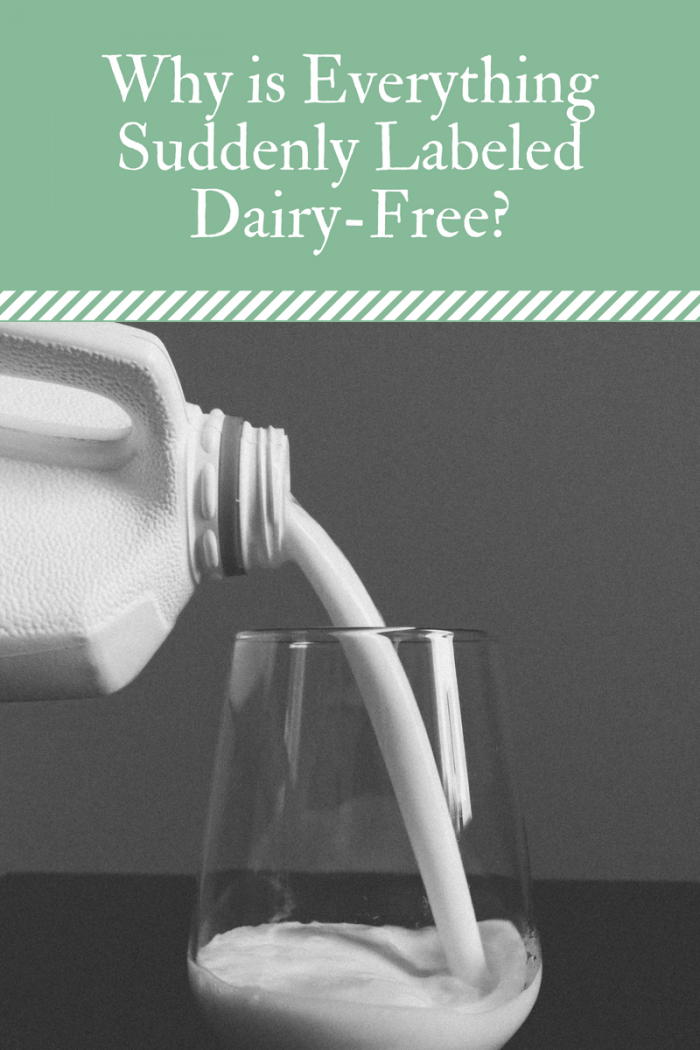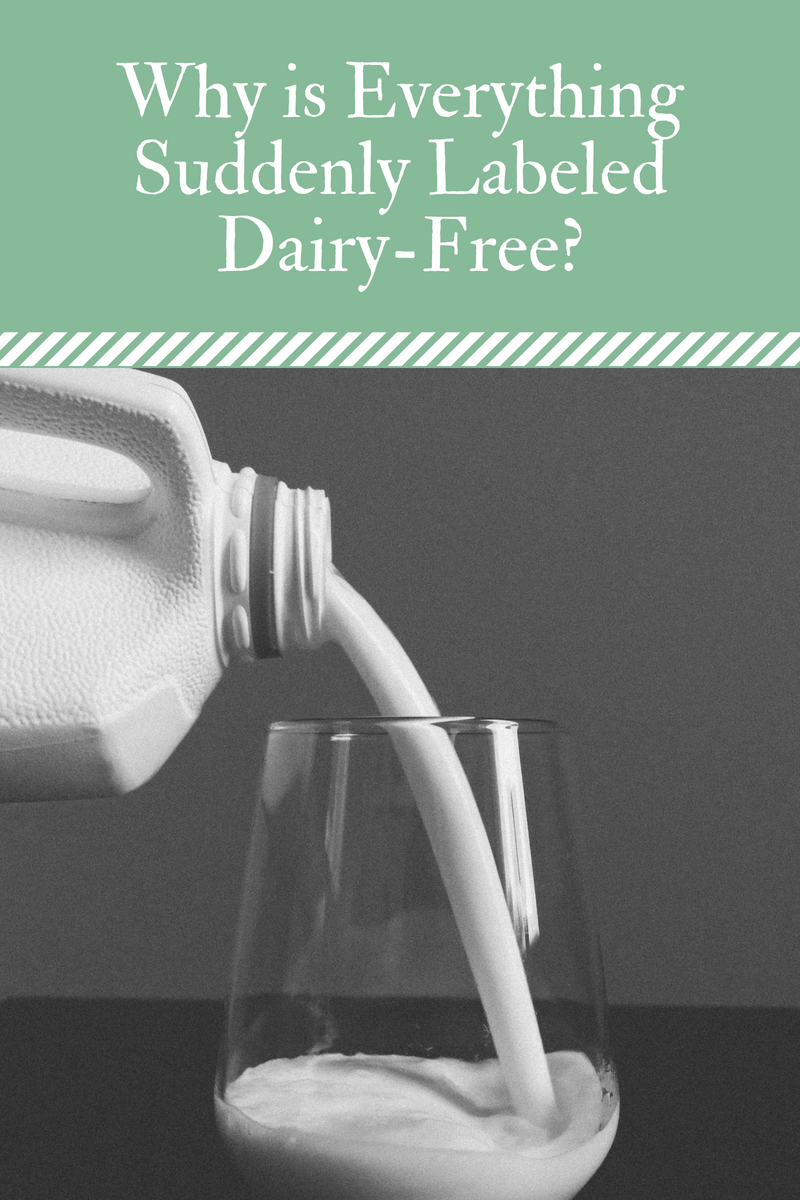
Milk: Does it do a body good, or should it be avoided at all costs?
When I first started on my healthy food journey, I fell in with the “real food” crowd. Raw milk was the gold standard, and I had a herdshare for many years. That is the only way to get raw (unpasteurized, unhomogenized) milk in Michigan. I loved the way it tasted and made wonderful cheese. But it got to be too much (the lowest share was one gallon, and it was a 45 minute drive each way to the farm).
I remember when I stopped the share, I had no idea what to do. I was standing there at the grocery store staring at my options. Soy milk? Oh wait, soy is bad and full of GMOs. Skim milk? That was bad for some reason which I couldn’t remember. And I think something about almond milk giving people cancer or something . . . UGH. So frustrating.
DH and I don’t really drink all that much milk, but I do like it in my latte. 2% seemed to be a good balance between latte froth and calorie content. But as I entered into the health and fitness realm, I started seeing more and more recipes labeled dairy free. There were all out arguments in some of the fitness professional Facebook groups.
I looked into Paleo and discovered that for some reason the Paleo gods decided our ancestors were more likely to have made almond milk or coconut milk than milk an actual cow (which didn’t make sense to me because my Dutch ancestors were known for cheese). At least that’s what it seemed like based on the recipes I kept finding. I decided to take another look at the whole milk thing. Read on to find out why you keep seeing dairy free labels everywhere and what I ultimately decided for myself.
Dairy Intolerance (Lactose, Casein, and Whey)
Having a food intolerance is not fun. It can cause abdominal pain, discomfort, and nausea. It also causes embarrassing symptoms like flatulence and diarrhea. Other symptoms linked to food intolerances include muscle or joint pain, headaches, exhaustion, and even skin symptoms like rashes and eczema.
Dairy is just one of those foods that many people seem to be intolerant of. Let’s talk about the main components of milk that people react to: lactose, casein, and whey.
Milk sugar (lactose) intolerance
It’s estimated that up to 75% of adults are lactose intolerant. Lactose is the carbohydrate “milk sugar” naturally found in most dairy products. Lactose intolerance is so common you can buy lactose-free milk in your regular grocery store. Lactose-free products are treated with the enzyme “lactase” that breaks the lactose down before you ingest it. It’s this lactase enzyme that is lacking in most people who are lactose intolerant.
The lactase enzyme is naturally released from your intestine as one of your digestive enzymes. It breaks down the lactose sugar in the gut. When someone doesn’t have enough lactase, the lactose doesn’t get broken down the way it should. Undigested lactose ends up being food for the resident gut microbes. As they ferment the lactose, they create gases that cause bloating, flatulence, pain, and sometimes diarrhea.
Lactose is in dairy but is in lower amounts in fermented dairy (e.g. cheese & yogurt) and butter. Steering clear of lactose isn’t that easy as it is added to other foods like baked goods, soups, and sauces. And if you’re taking any medications or supplements, check to see if it’s in there too, as lactose is a common ingredient in them.
If you have symptoms of lactose intolerance, keep an eye on food, medication, and supplement labels.
Milk protein (casein & whey) allergy
Milk is a known, and common, food allergen. In Canada, it is considered a “priority allergen” and must be declared on food labels.
So, what are the allergens in milk? You’ve heard of “curds and whey?” Well, these are the two main proteins in milk. The solid bits are the curds (made of casein), and the liquid is the dissolved whey.
Unlike lactose intolerance, casein and whey can cause an actual immune response. It’s an allergy. And this immune response can cause inflammation. In fact, we don’t know how many people have these milk allergies, but most estimates put it far below that of lactose intolerance.
Like lactose, these allergenic milk proteins can be found in other products too. They’re not just in dairy but are often in protein powders as well (Have you heard of “whey” protein powders?).
Some of the symptoms of milk protein allergy differ from that of lactose intolerance; things like nasal congestion and mucus (phlegm) are more common here. And casein seems to be linked with belly fat.
Interestingly, people who have gluten intolerance are often allergic to milk proteins like whey and casein as well. These can go hand-in-hand.
Like lactose intolerance, if you’re allergic to casein and whey keep an eye on labels so you can avoid these.
My Personal Experience
I was tested by a naturopath and was not found to have any dairy allergies. I have gone dairy-free for awhile in the past, with no noticeable effects. Now, I should note that I do not consume all that much milk so it is possible that if I were to increase my consumption, I might notice something.
Because I value supporting local farms and would like to get back to making cheese, I have decided to join a herdshare. I found one with a convenient pickup location that offers 1/2 gallon shares. I fully recognize the risks I am taking. If you are considering raw ilk, I encourage you to do your own research.
Precision Nutrition, the organization through whom I have my nutrition coaching certification, does not endorse raw milk. They do have a very excellent balanced article here that I would encourage you to read for more in-depth discussion of the pros and cons of consuming dairy milk.
Conclusion
If you get gassy, bloated, or diarrhea after eating dairy, you may have a lactose intolerance. If you often get a stuffy nose and mucus, then you may be allergic to casein and/or whey.
While dairy may be an entire food group, it is not an essential nutrient. All the nutrients in dairy are available in other foods. If you experience these symptoms, you can try removing dairy from your diet. You may find improved digestion and fewer gut issues. Or you may find improved nasal congestion, or even less belly fat.
Like everything, you will need to think of your body as a science experiment and see for yourself what feels best to you.



Wendy I didn’t know you were still blogging, I’m happy to have found you again. 🙂
Kelly
yes, good to “see” you. I took some time off and have changed focus a bit but I’m still here 🙂